Filming on location in Jackson Hole with Location Manager Ian Gersten
Ian entered the film industry as an Assistant Cameraman and then an Assistant Director and he’s worked in commercials, features and documentaries around the world. His work has focused on the Rocky Mountain region of the US for more than 20 years.
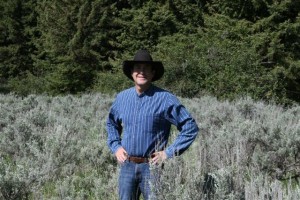 What can you tell me about the region that you cover?
What can you tell me about the region that you cover?
Generally speaking, the area I cover includes much of the northern and central Rocky Mountains. The topography features every biome from alpine to desert; prairies, badlands and rolling farmlands in western South Dakota and Wyoming; the mountain ranges and high Sonoran Desert basins of Wyoming, Montana and Idaho, and the beginnings of the canyon country in northern Utah and Colorado.
Mountains, lakes and rivers abound; spectacular vistas, canyons, waterfalls and thermal features are found in many areas. The lack of urbanisation in the region has preserved the character and quality of the natural settings. While no large metropolitan centre resides in the region, there are many mid-sized cities and towns offering amenities and most necessities for any production. Nearby Salt Lake City, Utah and Denver, Colorado, offer support possibilities such as specific equipment, facilities and specialists in many areas which sufficiently augments our regional talent pool and production infrastructure.
What locations are most commonly used by film and TV crews?
The obvious draws to the area are the mountains, wildlife and recreational opportunities offered by the surrounding national parks and national forests. Grand Teton National Park offers the greatest abundance and perhaps most varied wildlife species in the lower 48 states. Coupled with one of the most dramatic mountain ranges on the continent, it provides a wealth of filming opportunities. Nearby Yellowstone National Park provides scenic wonders found in very few places on the planet including hundreds of thermal features, an abundance of wildlife and historical edifices preserved for posterity in the country’s first national park.
Yellowstone National Park provides scenic wonders found in very few places on the planet including hundreds of thermal features.
Other filmic area attractions feature spectacular vistas, winding roads, western American cultural experiences and many outdoor recreational possibilities, as well as interesting town sites in Jackson Hole and surrounding areas.
What are the more unusual locations in your region that our readers would not necessarily associate with the region?
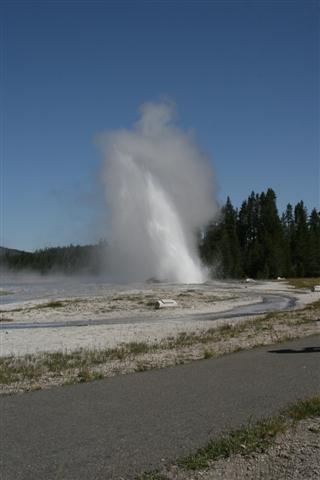 Productions are attracted by the unique wildlife, thermal features, breathtaking vistas and indigenous cowboy and outdoor recreational cultures. These all are most definitely associated with this region. I think visitors are surprised by the depth of these amenities. Within a few miles you can experience alpine peaks, Sahara-like sand dunes, enormous lakes, white-water rapids, thousand-foot canyons and waterfalls, rolling farmlands and volcanic topography, all set within a near pristine natural environment.
Productions are attracted by the unique wildlife, thermal features, breathtaking vistas and indigenous cowboy and outdoor recreational cultures. These all are most definitely associated with this region. I think visitors are surprised by the depth of these amenities. Within a few miles you can experience alpine peaks, Sahara-like sand dunes, enormous lakes, white-water rapids, thousand-foot canyons and waterfalls, rolling farmlands and volcanic topography, all set within a near pristine natural environment.
You could be here for months, if not years, and not see it all. Every different season exposes the area in a unique way. Yellowstone and Grand Teton National Parks are completely different entities in the winter than they are in summer and the uniqueness of the wildlife here can only be appreciated when experienced in different seasons.
What has been your most difficult location assignment to date and why?
Because the region spans so many different biomes and political regions, permitting can sometimes be a trying proposition. Perhaps one of my most challenging jobs was to secure permits for a car commercial using the very steep and windy Beartooth highway in northern Wyoming and southern Montana. This location is one of the remotest in the country. Authorisations included permits from two national forests, two state highway commissions, a national park, a local municipality, two state police forces (highway patrols) and two local county police forces (sheriff’s departments), few of whose offices were located near to each other, or near the locations for that matter, or had worked together very often. In fact some of the entities were located in state capitals 700 miles apart. This was exacerbated by the fact that I was called in on the project after it had started specifically to help extricate them from a botched permitting job by a previous manager. It ended well though, despite our temporary closures of a very busy scenic highway during a high-use holiday.
What types of production do you work on most?
The majority of my work comes from various film commercials and from print advertising for magazines or catalogues. I occasionally work with feature productions, which we are interested in attracting more of to the area, as well as many documentaries which often need some location recommendations. There are also many skiing-oriented and outdoor-sports-oriented projects that come to the valley and several of the local production companies focus on these productions.
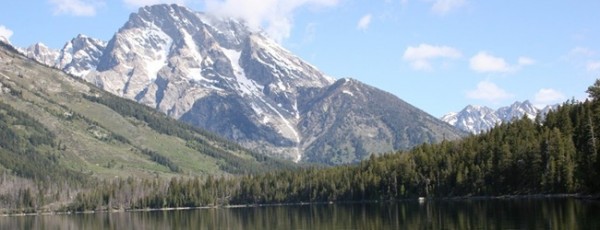
Clients over the past year or so have included TV show Modern Family, a commercial and event production for Mercedes-Benz, the State of Wyoming Tourism promotions, promotions for the National Park Service’s Yellowstone Foundation, as well as commercial projects for Century Link, Marlboro, and Jeep. A segment of Tarantino’s Django Unchained was filmed here this winter as well.
Are there any tips that you would like to share with our audience about filming in your region?
Any tips for productions would be more specific to that particular production and could range from “Watch out for grizzly bears this time of year” to “Bring warm clothing any time of year as we do get snow on occasion during the summer!” Generally speaking, visitors should be aware that Jackson Hole and environs is located at a high altitude 1,900 metres. The surrounding mountains reach over 4,000 metres and the Yellowstone plateau averages over 2,300 metres.
Any tips for productions would be more specific to that particular production and could range from “Watch out for grizzly bears this time of year” to “Bring warm clothing any time of year as we do get snow on occasion during the summer!”
The air here is very dry. Acclimatisation can be a factor for production, especially when working at the higher elevations (drink lots of water, take it easy the first couple of days, and easy on the alcohol consumption). Also, as noted above, permitting can be tricky with some agencies requiring three or four weeks’ lead time for any application. Last-minute permitting is not only highly discouraged but usually not feasible. Also, as Jackson Hole is a first-tier tourist destination, booking accommodations well in advance is advised.
There are many great hidden treasures to find here so working with knowledgeable location contacts is essential for gaining access to private ranches, spectacular homes and secret haunts.
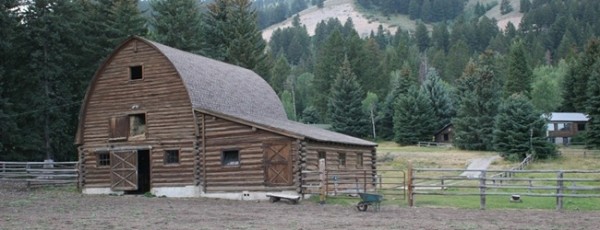
Which are the best airports to use to film in your region? Any tips on customs clearance or film friendly freight agents?
Jackson Hole Airport is the central airport to access the area. However, other large airports may be conducive to accessing particular areas of this very large region. The airports serving Bozeman, Montana, Idaho Falls, Idaho and Rapid City, South Dakota, are among those, as well as the Salt Lake City International hub and the Denver International Airport. The Jackson Hole Airport in particular has been very film-friendly and open to assisting with projects, equipment, security issues and private charter needs.
What are the most film-crew-friendly hotels in your region and where is your favourite wrap party venue?
Being a resort area there are many accommodations to choose from especially convenient to specific location needs. Rates vary from season to season and great deals are available at many hotels in the off-seasons.
For some obvious reasons, the world-famous Million Dollar Cowboy Bar seems to be the wrap party location of choice, but many other sites offer exciting alternatives.
In Jackson Hole itself there are several hotels that can accommodate large crews including the Snow King Resort, the Best Western Lodge and Spring Creek Resort, as well as several for smaller crew sizes. In nearby Teton Village there are several very large resorts which focus on the heavy ski tourism including the Four Seasons Resort, the Teton Mountain Lodge, Hotel Terra and the Snake River Lodge among others. Other excellent choices can be found throughout the region depending on your area of focus, including those accommodations in the national parks. For some obvious reasons, the world-famous Million Dollar Cowboy Bar seems to be the wrap party location of choice, but many other sites offer exciting alternatives.

There are usually set costs for Public Liability cover for film units and costs for insuring locations. Can you tell us about location insurance and possibly examples of costs in your region?
All locations, whether private or public, will require insurance indemnification against damage or other liability. Certificates will need to be issued prior to having any access granted. The National Park Service requires a minimum million dollars in coverage. Such a policy is usually accepted by all other locations, but some private locations may also require a damage deposit if environmental impacts are anticipated.
What would you recommend crew and cast do to visit, have fun and relax locally?
I’m well aware of the expenses involved in shooting at a remote or distant location, but finding an extra day or two to see some of the sights, especially the national parks, would definitely provide memorable experiences. Everyone who shoots here swears they will be back as soon as possible and often are. Again, be prepared for all weather contingencies; it can be hot one day and snowing the next in any season.
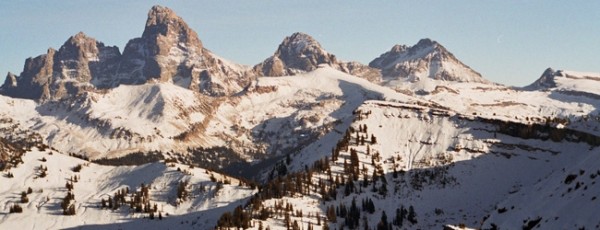
What do you do to chill out after a full on location shoot? Where do you find peace of mind?
My current passions are fly-fishing and scuba diving, both of which can be found up in Grand Teton National Park. The diving is a bit chilly (dry-suits recommended) but the fishing is excellent. Floating the Snake River is as much fishing as wildlife viewing and the scenery is spectacular.
Thank you
To contact Ian please click here.
Related Posts
- Filming in Wyoming with Todd Jones
- Wildlife filming: What producers should know
- Filming on location in Wyoming with Michael J Emmer of Bridger Productions
- Wyoming snow attracts Quentin Tarantino for Django Unchained
- Filmmaker Devin Graham shoots Mid-West base-jumping stunts for Ford
- Wyoming Film Incentives Now Available
- On location with Michael Brook, Manager of Screen Auckland
- Filming on location in Connecticut with Mark Dixon
Related posts:
Comments
Not Logged in
You must be logged in to post a comment
There are no comments